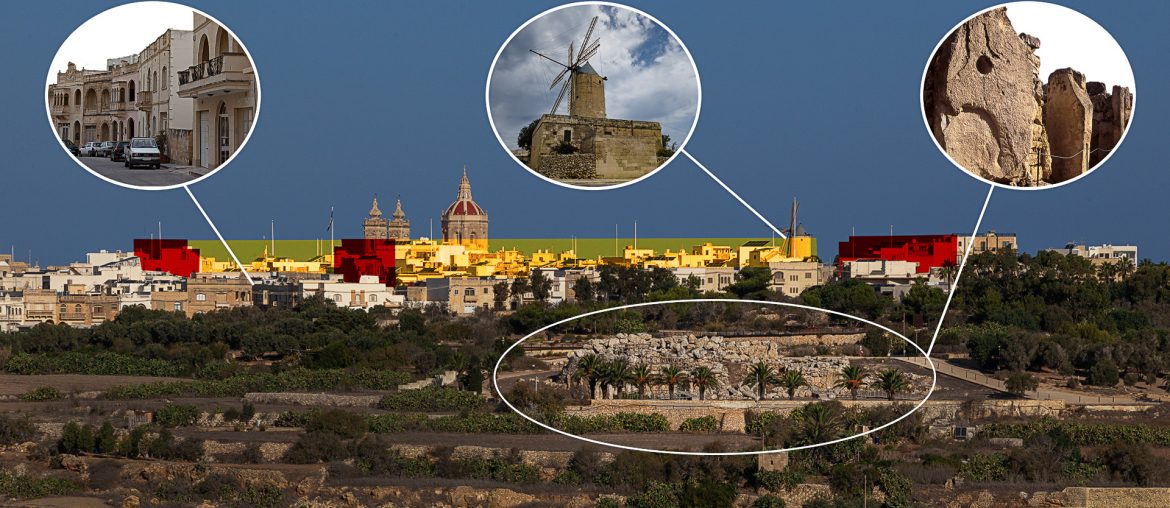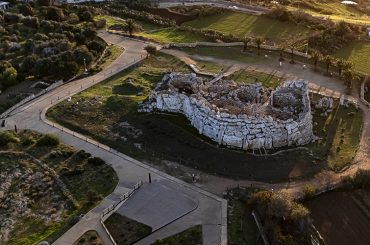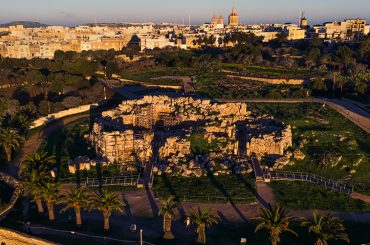UNESCO’s rules designed to protect World Heritage Sites hold that proposed developments in the buffer zone of the sites have to pass an impact assessment before approval, but the Maltese authorities have only asked one applicant out of five that applied to build flats near Ggantija Temples to carry out an assessment.
This website has investigated the matter after obtaining two letters that were sent by the director of UNESCO’s World Heritage Centre, Lazare Eloundou, to Malta’s ambassador for UNESCO, Joseph Vella Gauci. UNESCO (the United Nations Environmental, Social and Cultural Organisation) administers the world heritage sites, which number around 1,100 worldwide. Malta has three World Heritage Sites: Valletta in its entirety, the Neolithic Temples collectively, and the Hal Saflieni Hypogeum.

In his first letter, Eloundou referred to an application for a block of 23 flats, and asked for the Maltese authorities’ “comment on potential impact” on Ggantija Temples. Eleven weeks later, Eloundou wrote again, pointing out that a heritage impact assessment is a “pre-requisite for development projects and activities that are planned for implementation within or around a World Heritage property.”
The Superintendent of Cultural Heritage, Kurt Farrugia, then wrote to the architect of one of the development applications – called Ggantija Heights – in which he said that UNESCO had “insisted” that “a Heritage Impact Assessment should be carried out for this development.”

No one asked the applicants or architects of the other four proposals for flats within the buffer zone for an assessment even though Eloundou had written about developments in the plural.
On Ggantija Heights, the Planning Commission then “suspended” the case by six months, presumably to allow time for an impact assessment.
Around eight months have now passed, and in his latest report, the Planning Authority’s case officer wrote that “no [new] information has been submitted.”
In the past month, the Planning Commission has deferred the hearing twice. Asked to explain the deferrals, a spokesperson for the Planning Authority told this website that the first deferral was requested by the project architect due to being “unavailable for the sitting”, and in the second instance, the Planning Commission decided to refer the case to the Planning Board, which decides on major or sensitive developments.
This website asked the project architect, Samuel Formosa, whether an impact assessment was being conducted and whether it will be completed in time for the hearing of the Planning Board. Formosa did not respond to the written questions.
No assessment for four-storey block recommended for approval
UNESCO’s operational guidelines hold that development decisions have to be based on the outcome of an assessment – and this was stated in UNESCO’s letter to the Maltese authorities – but the Planning Authority is recommending approval for a four-storey block of flats situated in-between the temples and Ta Kola Windmill despite the absence of an assessment – or even screening – as defined in UNESCO’s operational guidelines.
Neither the Planning Authority nor the Superintendence of Cultural Heritage have requested screening or an impact assessment, and the Planning Board is now scheduled to decide on the application next week.
Another entity, the Chamber of Architects (Kamra tal-Periti), did raise a point on impact assessments in a directive to architects published last February. The directive described various scenarios that would give rise to potential professional misconduct, including developments that would “alter the physical, visual or environmental integrity” of the Neolithic temples’ buffer zone, as well as developments that would “alter the views or vistas of and from the megalithic temples, their buffer zones, and surrounding landscape.” The directive then held that architects had to carry out impact assessments in accordance with UNESCO’s operational guidelines and present such assessments with the development application.

At the time, the chamber’s president, Andre Pizzuto, had told this website: “We have been following the debate about the project [block of flats] near Ggantija Temples and felt that, as a Kamra tal-Periti, we had to carry out our duty. As a president I felt that I could not let this go, and the council was unanimous in its support for the directive.”
Pizzuto did not respond to questions sent by this website earlier this week, in which he was asked if he had a comment to make about the lack of impact assessment in the case scheduled for a hearing next week, and whether that rendered the chamber's directive ineffective.
UNESCO wants assessment for cumulative impact
UNESCO’s operational guidelines are laid out in a 92-page document called Guidance and Toolkit for Impact Assessments. The idea is to have impact assessments inform decisions on development around World Heritage Properties in order to protect the integrity and context of these sites that have an “Outstanding Universal Value”, especially since many of the sites – which number around 1,100 sites worldwide – are threatened by various elements, especially development.
The document holds that developments whose impact has to be considered are not only limited to the buffer zone, but also those in the “wider setting” – an area that spreads beyond the buffer zone.

There are two types of assessments: a “standalone” assessment for specific developments, or an assessment of the cumulative impacts of multiple small developments that would not individually have an impact large enough for targeted, standalone assessments.
The operational guidelines define cumulative impact as something that “results from the environmental impacts of a project [development] combining with the same environmental impacts of other past, existing and reasonably foreseeable future projects or activities, including those that may be enabled by the project.”
Four of the applications for multi-storey blocks of flats in the Ggantija Temples’ buffer zone are located in a neighbourhood that consists almost entirely of two-storey townhouses. This means that these developments would alter the skyline and streetscape, make the area more congested, and dilute the so-called intangible cultural heritage of a community that decorates house facades during events such as Christmas, Easter and the town feast.

Vehicle congestion would increase considerably as none of these developments have underground parking – the heritage authorities are opposed to excavation in the buffer zone of the temples.
Moreover, granting one of these permits would set a precedent, and spawn additional applications for more blocks of flats, with quicker approvals due to the precedent and what the Planning Authority likes to term as “commitments” – other similar permits granted in the past.
Yet the Maltese authorities have not ordered any assessments, neither standalone assessments nor any assessments for cumulative impacts. Neither have the Maltese authorities informed UNESCO of these proposals or conducted any preliminary screening, as stipulated in the operational guidelines.
Donate to Ggantija Streetscapes
It takes much resources, time, and effort to to produce the professional reportage of the Ggantija Streetscapes investigative series published on this website. The investigative reportage has been making an impact. It also serves to rally support for efforts to save the neighbourhood that forms part of the integrity and authenticity of the temples. Sustain this effort by donating as little as €5.





